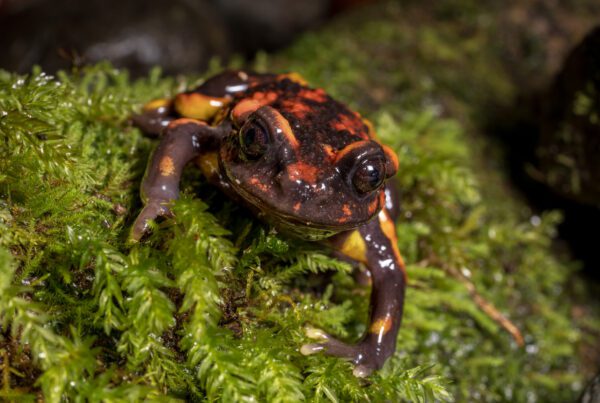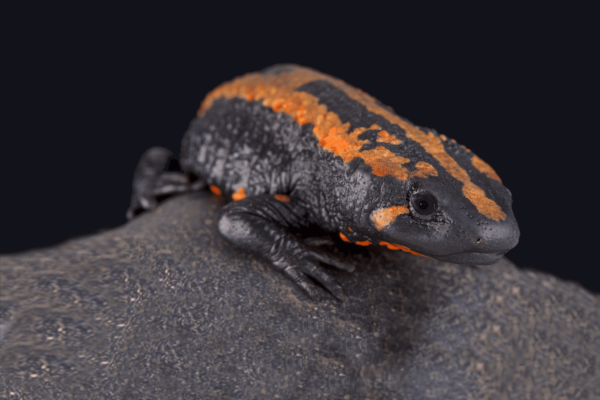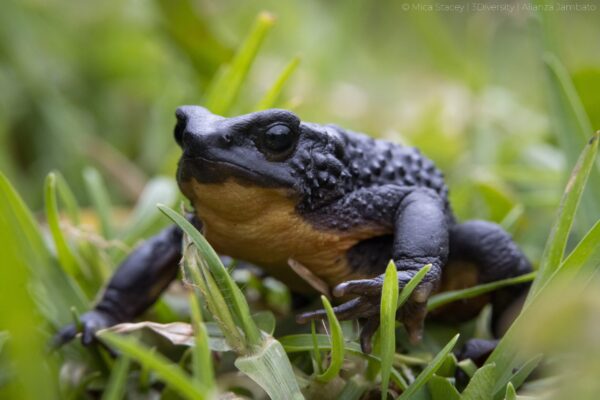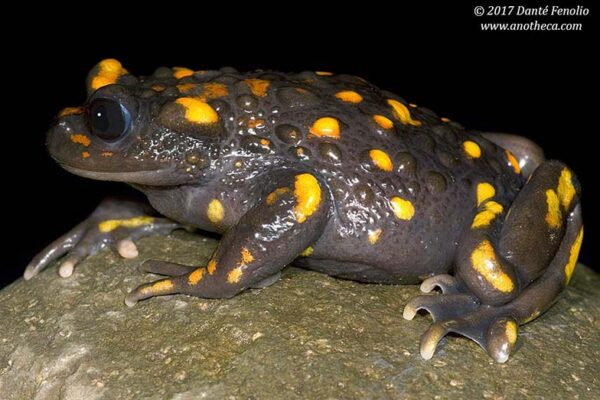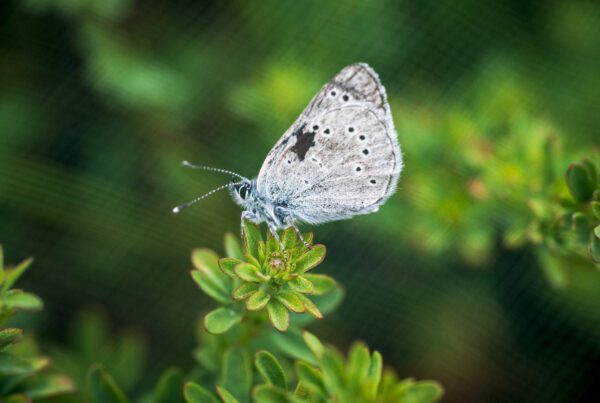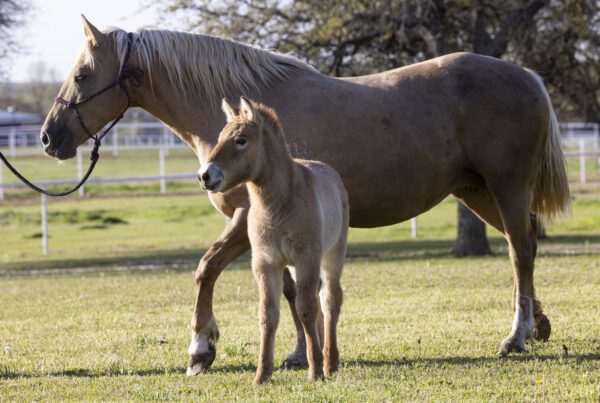Threatened and endangered amphibians are the focus of our new Wild Genomes program. From left to right: Laos warty newt (Laotriton laoensis); Jambato harlequin frog (Atelopus ignescens); and Chile Mountains false toad (Telmatobufo venustus)
Morris Animal Foundation and Revive & Restore recently announced the funding of five new projects building genomic tools for amphibian conservation. The projects are an important first step toward species preservation and provide compelling examples of genomics in action.
“Amphibian populations are declining at an alarming rate around the world,” said Dr. Kathy Tietje, Chief Program Officer at Morris Animal Foundation. “These newly funded projects will leverage advanced genomic approaches to create new conservation strategies.”
Amphibians have existed on Earth for more than 300 million years, but today the International Union for Conservation of Nature (IUCN) estimates at least one-third of known amphibian species are threatened with extinction. Major threats to amphibians include habitat loss and degradation, and the infectious disease chytridiomycosis. Managed populations of amphibians have become the only hope for many species facing imminent extinction, making genetic rescue technologies a critical component of current and future recovery efforts.
“Amphibians face monumental conservation challenges, and we need new tools to help bring these species back from the brink,” said Bridget Baumgartner, Director of Research & Development at Revive & Restore. “The selected projects have important conservation applications today, and lay the foundation for future genomic technologies that can help rescue amphibian populations.”
The selected projects are part of the Wild Genomes program, an initiative to develop applied genomics tools for wildlife conservation. To help stem the loss of amphibians globally, Morris Animal Foundation and Revive & Restore created a special call for Wild Genomes proposals focused on amphibian species. More than 30 proposals from around the world were submitted for funding consideration. Projects were selected for ecological significance, strategic conservation value and potential for immediate conservation impact..
Genomic tools, like genome sequencing, cell culturing and biobanking, are standard practice in agriculture and human medicine. However, these technologies have rarely been applied in wildlife conservation. Through their portfolio of Wild Genomes projects, Morris Animal Foundation and Revive & Restore help introduce conservation biologists to genomic tools and showcase their potential for the protection and restoration of wildlife. The projects are slated to begin this year.
Grant recipients and their topics are:
- Dr. David Weisrock, University of Kentucky – Use a top-down genomic approach to develop a cost-effective molecular toolkit for the conservation of an endangered newt (Laotriton laoensis).
- Dr. Andrea Schreier, University of California, Davis – Enable rapid field detection of the amphibian fungal pathogen Batrachochytrium dendrobatidis using a CRISPR-based SHERLOCK assay.
- Dr. Danté Fenolio, San Antonio Zoo Center for Conservation and Research – Complete a reference genome for the Chile Mountains false toad (Telmatobufo venustus) to help develop a national conservation plan for this species and other false toads endemic to Chile.
- Dr. Tao T. Nguyen, Institute of Genome Research – Sequence the unusually large and complex genome of the Vietnamese crocodile newt (Tylototriton vietnamensis) to provide a resource for scientists and inform conservation of the species.
- Dr. Sarah Fitzpatrick, Michigan State University – Develop a reference genome for the Andean Jambato harlequin frog (Atelopus ignescens) to characterize a recent genetic bottleneck and improve recovery of a species once thought to be extinct.
About Morris Animal Foundation
Morris Animal Foundation’s mission is to bridge science and resources to advance the health of animals. Founded in 1948 and headquartered in Denver, it is one of the largest nonprofit animal health research organizations in the world, funding more than $149 million in nearly 3,000 critical studies to date across a broad range of species. Learn more at morrisanimalfoundation.org.
About Revive & Restore
Revive & Restore is the leading wildlife conservation organization promoting the incorporation of biotechnologies into standard conservation practice. The Sausalito, California nonprofit was formed in 2012 with the idea that 21st century biotechnology can and should be used to enhance genetic diversity, build disease resistance, and facilitate adaptation. Its mission is to enhance biodiversity through the genetic rescue of endangered and extinct species. Learn more at reviverestore.org.
Media Contacts:
Kelly Diehl, DVM, MS (Morris Animal Foundation)
Kika Tuff, PhD (Revive & Restore)
More posts in News & Media
